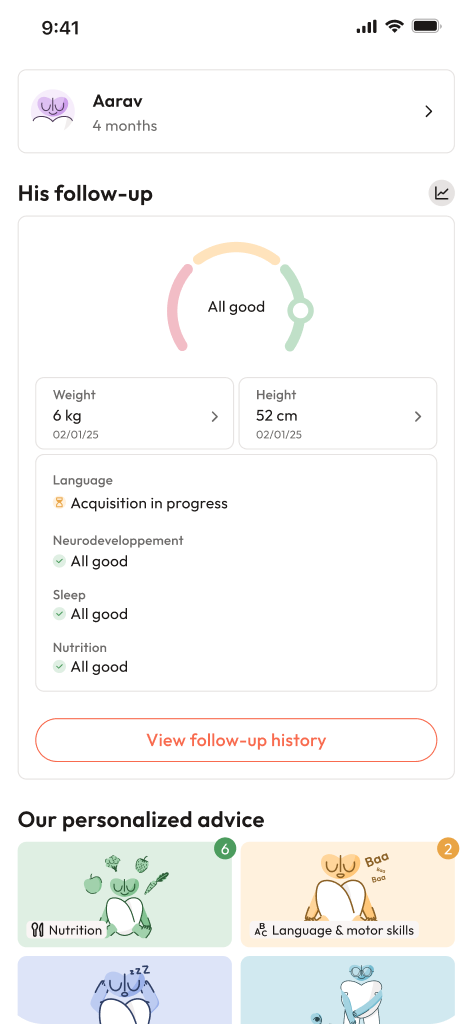Wondering, waiting, second-guessing—a whirlwind of emotions often fills the air when that all too-familiar question arises: am I pregnant or not? For countless parents, the home pregnancy test quickly transforms from a humble plastic stick into a potential turning point, charged with anticipation and a touch of anxiety. When, how, and why to trust this small device? With social media brimming with tips (some dubious, some downright hazardous), and the pressure to act fast or keep things private, it’s no wonder confusion abounds. Urgency meets uncertainty, but science offers clarity. Here’s how to move from hesitation to confident next steps, powered by medical know-how and deep respect for parental journeys.
Reliable answers mean knowing why home pregnancy test timing matters, how to steer clear of household “myths,” and what true signs to watch. From faint lines to digital words, early mornings to anxious midnights, get strategies rooted in health—plus tips for when to reach out for expert support. Let’s decode the essentials, armed with both empathy and evidence.
How a home pregnancy test works: decoding the science in your bathroom
The basics—what a home pregnancy test actually measures
A home pregnancy test isn’t just an everyday gadget—its purpose is singular, precise, and powered by laboratory science translated into a DIY format. At its core, this test is a swift immunoassay, engineered to detect a specific molecule: hCG, or human chorionic gonadotropin. This “pregnancy hormone” makes its grand entrance only after a fertilised embryo secures itself in the uterine lining, starting a cascade that triggers the placenta’s hormonal output.
Why hCG? Because its appearance practically shouts, “Implantation happened!” Unlike other urinary markers, this hormone provides a biological stamp of a very specific moment. First detected in blood, it later seeps into urine, which is why a home pregnancy test can work its magic right at home—no needles, no appointments right away.
The journey of hCG—from conception to detection
The dance begins, typically, 6–10 days after ovulation. As the embryo takes root, hCG is minuscule, sometimes barely traceable (curious fact: levels usually double every 48–72 hours in early weeks, but each woman writes her own biological story here). Brands often tout their “sensitivity”, measured in mIU/mL; a lower number, like 10 mIU/mL, means the test can react to tinier amounts and potentially give that positive line a bit sooner, while 20–25 mIU/mL is the standard you’ll find for reliable detection at the time of a missed period.
But take a breath—a test reacting earlier does not guarantee you’ll see results before your next cycle is due. Many factors conspire: the timing of implantation, how concentrated your urine is (diluted samples may “hide” the signal), and even how closely instructions are read.
DIY “home pregnancy tests”: risks and scientific flaws
What internet myths look like at home
Ever seen those trending reels, urging desperate hopefuls to mix urine with common kitchen items like salt, toothpaste, sugar, baking soda, or even bleach, in search of foaming, fizzing, or mysterious crystals? Curious as it might sound, not a single one of these concoctions can actually measure hCG. No gestational marker involved—just random chemistry at play.
Some highlight supposed “color changes” or odd textures, driven by temperature, pH or even what you ate for lunch. Reality check: these results can swing wildly for the same person on two different days. Subtle? Unpredictable? Absolutely. Reliable? Not even close.
The medical case against DIY methods
Let’s be brutally clear. “Homemade” tests:
- Observe general reactions, not pregnancy. No hCG even enters the discussion.
- Are never standardized—so many factors shift (quantity of product, temperature, urine concentration).
- Have no scientifically defined threshold: foam, clumps, colors—none correlates to hCG.
- Are emotionally deceptive: desperate for hope or fearful of news, it’s all too easy to “see” what we wish.
Urine itself is sensitive to infection, medication, hydration, and diet. Even a strong cup of tea could tip results, completely unrelated to pregnancy. More seriously, mixing urine with bleach (or acids plus bleach) risks releasing fumes—eye stinging, airway irritation, chemical burns.
The right tools—an apples to oranges comparison
- Pharmacy home pregnancy test: Immunoassay, specific to hCG, with clear control/check lines.
- Quantitative blood test: Clinically administered, sensitive even to lowest hCG, tracks pregnancy’s progress.
- DIY tricks: All speculation, no science, added risk.
Which home pregnancy test to choose? Feelings, formats, and functionality
Strips, midstreams, cassettes, and digital—what’s behind the packaging?
Whether you’re drawn to the simplicity of urine test strips (affordable, but sometimes faint in their results), the convenience of midstream sticks (direct use, less mess), the methodical “old-school” reliability of cassettes with droppers, or the fuss-free assurance of a digital test (words: “Pregnant” or “Not Pregnant”—no line-anxiety), the right type depends on your comfort, clarity needs, and budget.
Early detection models (marked “early result”) catch lower levels of hCG, promising answers a few days before a missed period. But fair warning: they trade certainty for speed. More faint lines, more “maybe” results, possibly more emotional rollercoaster.
Best timing for a home pregnancy test—when to reach for the kit
First-morning magic and the importance of patience
For the highest accuracy, nothing beats first-morning urine. Concentrated hCG, undiluted by overnight fasting, stacks the odds in your favour. If morning is impossible, aim for a three to four hour stretch without urinating and minimal fluid intake.
Most meaningful results come roughly 7–14 days post-ovulation—timing by DPO (days past ovulation) is more scientific than trying to count from intercourse. If cycles are regular, day of the expected period (or the next morning) is prime time. Earlier attempts? Yes, they can work—just with more chance of a fuzzy answer. Negative but still no period? Wait 48–72 hours, then retest. For irregular cycles, estimate ovulation best one can, then apply the same logic.
Accuracy and sensitivity: how much can you trust the home pregnancy test?
Packaging promises vs. lived reality
Manufacturers guarantee about 99% accuracy when the test is used precisely as directed—timing, window, and urine quality all aligned. But move too early (testing before a missed period) or break from instructions and that percentage dips. Sensitivity and specificity (the ability to correctly identify those with and without pregnancy) shift with usage patterns.
Analytical thresholds (10, 20, 25 mIU/mL) advertise how little hCG the test can find, but real life isn’t a sterile lab: user errors, diluted samples, reading the stick too late, expired products—all decrease accuracy in the real world.
Using a home pregnancy test correctly: steps that matter
From setup to interpretation—science in your hands
- Always read your specific brand’s insert (no shame in pausing to check).
- Confirm the expiry date.
- Wash hands, use a clean surface, prepare a timer.
- Collect urine as instructed—midstream or in a cup.
- Apply sample, start timer—no peeking before the time’s up.
- Read results only within the recommended window (usually 3–10 minutes)—stale results can lead to false hope (evaporation lines).
- Safely discard the stick, wash up.
What next? From lines to choices
If you spy a positive
Any visible test line or explicit digital “Pregnant” likely indicates pregnancy. Next best move? Call your trusted healthcare provider. Arrange a confirmatory visit (they may recommend a quantitative hCG test and/or first-trimester ultrasound), and talk about prenatal vitamins (look for formulations with 400–800 mcg folic acid unless told otherwise), medications, and lifestyle. Early steps, big impact.
Negative, faint, invalid—sorting the ambiguities
- Clear negative: hCG may still be too low or it’s too soon. If period is late, test again in 2–3 days.
- Faint positive: Could mean very early detection or rising hCG. Repeat for peace of mind or seek a blood test.
- Invalid (no control line): Disregard—start over with a fresh stick, check storage/expiry again.
Lines must show inside the manufacturer’s time window; interpreting hours later only invites confusion.
False positives and negatives—when the home pregnancy test misses the mark
Why an incorrect answer sometimes appears
- False positives: Fertility treatments (hCG injections), early pregnancy loss (chemical pregnancy), very recent miscarriage, rare tumors.
- False negatives: Too-early testing, diluted urine, ectopic (outside-the-uterus) or slowly rising pregnancies, expired products, incorrect procedure.
- The so-called hook effect—in ultra-high hCG—rarely derails home tests, but it’s possible.
Early detection vs. standard timing—managing hopes and expectations
What “early detection” really means
Fancy a sneak peek before the missed period? Early-detection tests advertise results up to 5 days before, but biology can play spoilsport. Only a portion will see a true positive; many will draw blanks and face the stressful wait again. Earlier is not always easier—be prepared for more “gray areas.”
Clinical scenarios and medical red flags—beyond self-testing
When to seek care without delay
Active bleeding, severe abdominal pain with fainting, pronounced dizziness, or pain reaching the shoulder tip after a positive test are classic warning signs—could signify ectopic pregnancy or heavy bleeding. Fever with these symptoms warrants prompt medical evaluation.
Unusual patterns—quick loss of a positive line, persistent symptoms with negative tests, unexpectedly high or low hCG—also call for specialist review.
After your result—a pathway for every outcome
Positive? Negative? Next steps in action
Positive test: Contact your healthcare provider for confirmation, prenatal advice, medication and supplement review (including those all-important prenatal vitamins), and discuss follow-up scans. Avoid alcohol, tobacco, and seek advice on current medications.
Negative but suspicions linger: Retest after 2–3 days or arrange a blood hCG. Invalid? Try again, ensuring the test kit is intact and within its shelf life.
Practical buying tips: choosing the right home pregnancy test for your comfort
- Check sensitivity (lower mIU/mL, earlier possible detection).
- Decide on display preference (lines/crosses, digital words).
- Consider cost vs. pack size (bulk strips or one-time digital).
- Accessibility (availability in local pharmacy or online).
- Read for regional regulatory standards.
A basic strip suffices after a missed period, but digital tests offer clear, anxiety-relieving “yes/no” answers—choose what fits your style, not just the budget.
Storage, shelf life, and responsible disposal
Store kits dry and at recommended temperatures, away from sunlight or moisture. Past expiration? Don’t use—reagents can degrade, skewing results. Dispose used tests with household waste. For reduced environmental impact, buy what you need and pick low-packaging strip variants if possible.
Clinical alternatives and history—perspective through time
Blood-based beta-hCG testing (quantitative) beats urine for early detection and trends, while ultrasound confirms pregnancy’s location and viability a bit later on. Fun historical note: ancient bioassays involved animal responses—not the stuff of modern medical reassurance.
Key Takeaways
- A home pregnancy test uses hCG detection in urine to provide early, accessible pregnancy answers—timing and method matter.
- DIY mixtures with home products like salt, soda, or bleach offer no scientific reliability and introduce health risks—stick to validated tests.
- Prioritize first-morning urine; wait until a missed period for best results. If unsure or caught between faint lines and mixed feelings, retest in 2–3 days.
- Confirm positives with your healthcare provider, who may suggest quantitative beta-hCG blood tests and early scans.
- Ongoing symptoms or inconclusive tests? No need to remain in suspense—medical professionals provide clarity, support, and solutions shaped for your situation.
- For continuous support, personalised advice, and free child health questionnaires, download the application Heloa.
Questions Parents Ask
Can medications or health conditions influence a home pregnancy test?
In most scenarios, routine prescriptions (like antibiotics, painkillers, or hormonal contraceptives) don’t skew urine hCG results. The big exceptions are recent fertility treatments involving hCG injections, which can give a false positive for several days or weeks, and rare tumors that naturally produce hCG. Unusual lab interferences very occasionally occur. If results appear out of sync with your medical history—say, after fertility procedures, a recent miscarriage, or odd physical symptoms—a quantitative blood test paired with clinical advice will clear doubts.
What about privacy for teens—any consent issues with a home pregnancy test?
Legal guidelines differ, but in many places, minor teens can access pregnancy testing and even prenatal care in private. Sometimes clinic policies might ask for family involvement. Home pregnancy test use is private, but any ongoing care should follow local legal and ethical norms. If privacy is a priority, find out in advance at a trustworthy clinic, hotline, or school health service what options are open. Flexibility and empathy go a long way in supporting young people during such moments.
How can I talk to my adolescent about a home pregnancy test outcome, whether positive or negative?
Begin with attentive listening. A supportive first line—“I’m here for you, want to share what you’re feeling?”—helps. Avoid judgment, give space for any emotion, and gently guide towards practical options: repeat testing if needed, consulting a clinician, considering who else they trust for support. Prioritise clarity and kindness in all explanations. If strong distress or safety worries arise, involve health or counsellor support straight away. Above all, reassure: there are always choices, and expert help is just a step away.

Further reading:









